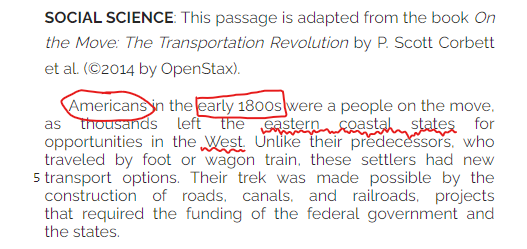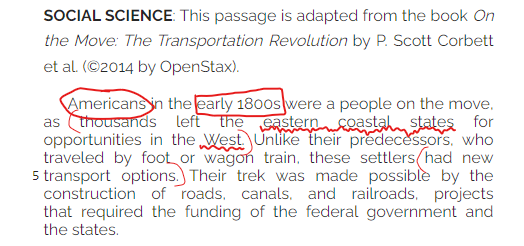You may sigh as you read the title, but give this a chance. Annotating the passages is a technique that helps many students boost their scores. Let’s talk about why.
Simply:
Think of the last novel you read for school. Was part of your assignment to annotate certain things as you read?
Now think about the types of markings (or annotations) you used to satisfy your English teacher’s request. Do you use underlines, circles, squares, stars, brackets, or perhaps something else? If you’ve used mostly underlines, you’re not alone. This is the most commonly used marking and, thus, has become meaningless.
Avoid using only underlines to annotate. Six or so years of annotating novels teaches most students to underline things without really thinking about what they are underlining.
Below is a very opinionated way to annotate your reading passages. Try this out on a couple of tests. From there, you are certainly allowed to keep what you love and ditch what is not helping. We say this because every test-taker is different; thus, what works for one will not work so well for another.
Things to mark from every passage:
Names, dates, and locations are important to mark because the questions often ask things that are meant to confuse details. Marking these three things will help you keep your details straight.
Now, here’s how to mark them:

As you can see:
Now you know what to mark from every passage. There’s one more step: learning what special things to mark from each kind of passage. We’ll call these “special things” relevant information.
There are four passages on the reading test:
We will go into more depth about the four kinds of passages in the [Passage types] chapter. But, for now, here’s a summary of what relevant information is for each kind of passage:
This next example includes the three things you should be marking from every passage (names, dates, and locations) as well as some relevant information in parentheses.

Pop quiz: What kind of things should you mark on the reading passage?
Now, what kind of markings should you use to annotate these things?
We recommend you try these specific markings out on a couple of tests before modifying the process to make it your own.
Annotating the questions themselves keeps you focused on what’s important.
This is especially important for long questions. The longer the question is, the more important it is to annotate it. It can be easy to get lost in a question like the one below.

To help this, circle the main elements of the question that help you focus on what it is asking. Here is an example of how you could annotate that same question.

As you can see, the big takeaways from the question are circled. This keeps you focused on what the question wants from you.
This will be important because the test will often try to trick you by giving answers that have familiar language from the passage in them. So, annotating a longer question will help keep you centered on what the question wants so you can avoid choosing an answer that might sound good… but is not truly answering the question.
Now you know how to annotate your ACT Reading passages. Annotating the reading section helps you find answers more quickly, which is a game changer on a test with such a short time limit.